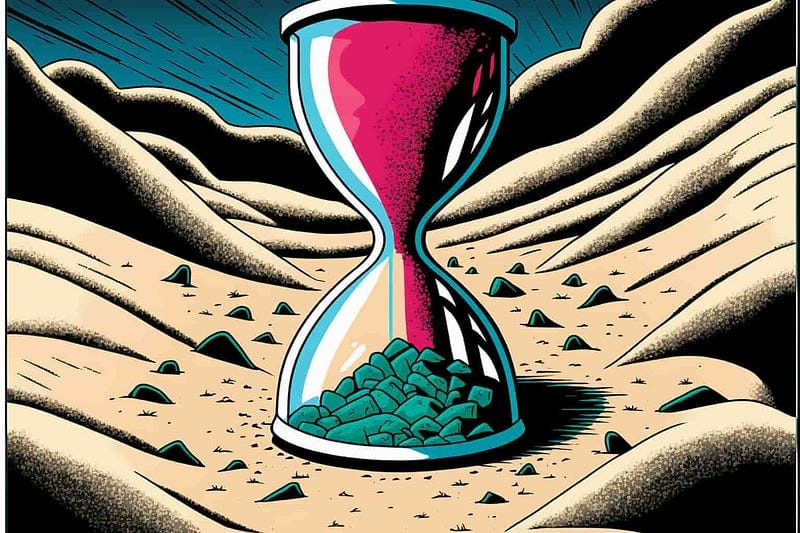How To Avoid Spending Too Much Time on Client Work
Learn how to walk the line between quality content and overthinking

If you want to start a fight among writers, ask how long it takes to write a 1,500-word blog post.
The answers will probably range from “a few hours” to “a few days.” Usually, debate ensues. The writers on the long end of the spectrum will wonder how quality work can happen in such a short timeframe, and the writers on the short end will wonder what takes so long.
Meanwhile, new freelancers are left wondering if they’re “doing it wrong.”
Writing is a craft, and like many crafts, it will get easier with practice. Yet as writers, particularly writers who are being paid for their work, it’s important to keep an eye on how much time is spent. If you’re charging per hour and take too long, your clients may be unhappy. If you charge a flat rate or per word, the compensation may not match your effort.
There are ways to decrease the amount of time spent writing, without sacrificing quality.
Create a process that matches your strengths
Years ago, I read a book called Daily Rituals: How Artists Work. I thought I might discover the “secret sauce” for being a more productive writer.
Instead, I learned that writers’ habits are as varied as the work they produce. Some have meticulous writing rituals, and others write nonstop for hours when the mood strikes. Some writers were juggling a day job, writing in their spare time, and others would publish once every ten years.
Among the writers who published regularly, it was obvious that they leaned into writing rituals that worked best for them. Certainly a novel is different than client work, but a lot can be gleaned from the processes of these writers.
To start, ask yourself the following questions:
- What time of day is best for my writing?
- What is the maximum amount I can write per day?
- How much time do I need to spend on prep work?
For example: I am an incredibly early riser and write best before the sun comes up. If I had to write something in the evening, it wouldn’t be very good. I know that it will take me far longer if I write outside of my prime working hours.
I also know the limits (word count) of what I can reasonably write per day. Anything more than that, and my brain gets tired. This becomes the baseline for how much time I can spend on a client piece.
Find your niche and stay there
Ever tried to write a piece when you know nothing about the subject matter? One time I was asked to help a fellow writer finish a blog post about KPIs for DevOps teams. The client had rejected the previous writer’s work. I thought I could handle it because I had a background as a product manager, but the more I dug into it, the more I realized that I was in over my head. I spent hours trying to understand the concepts.
And in the end, despite all of my efforts, the client rejected the article I wrote. Said it “didn’t go deep enough” for their software engineer audience. So in the end, everyone was unhappy.
If you’re new to client work, it can be tempting to accept any projects that are offered. And in the beginning, that may be necessary if you’re trying to earn a living.
But over time you should try to specialize in a few core topics. You’ll draw in better clients with your portfolio, write with more authority, and will spend less time researching. You’ll build up a library of resources and will understand the audience. In the end, the readers (and your clients) will benefit from your expertise.
Impose your own time limits
A completed article is a function of quality and time. Less time spent may lead to reduced quality. Higher quality needs more time. So how do you find a balance?
It can be so easy to get lost in writing. Maybe you are staring at a blank screen, unsure of how to begin. Maybe you have so much material to include that you realize you’ve written 2,000 words when the target word count was 1,500.
Both of these scenarios lead to a loss of your time, one of your biggest resources as a writer. Losing time on one client piece means less time for the next client piece (or you’ll find yourself working 60 hours per week).
Track the average amount of time you spend per 1,000 words. Give yourself a buffer, but then set a target for completing the draft — whether you finish in one marathon writing session or break it up into several chunks.
I use a timer. I’ll tell myself, “I will only spend 30 minutes on this next section.” If I’ve only written three sentences in 30 minutes, the piece isn’t going well and is “costing” me time.
When I’m struggling at the 30-minute mark (repeatedly), I change my approach. The timer becomes a hard deadline. I will produce “word vomit” and spill out all of my ideas for that section, as fast as I can, in those 30 minutes. This helps me get over the hump, and then I can go back and edit.
My 30-minute sprints are a variation of the Pomodoro technique: work, break, work, break. I know that I need to focus during those 30 minutes, and it helps me avoid checking social media or letting my mind wander to the next piece I need to write.

Learn to let go of perfection
As writers who want to produce high-quality work for our clients, it can be easy to overthink an article. We consider what words to use; we restructure sentences; we edit and rearrange.
Yet, at some point, making minute changes doesn’t measurably improve the quality of the piece or its potential success. It’s a blog post, not the next Nobel-prize winner.
At a minimum, you should understand the client’s expectations so that you can deliver work that won’t require a lot of rewrites. This will get easier over time as you understand your clients better.
Much like the 30-minute sprints of actual writing, set some limits around how much time you spend editing. Remember that writing perfection is subjective. You could spend an inordinate amount of time on word choice, only to have the client request further edits.
You can be more protective of your time if you draw a line between “quality” and “perfection.” You can spend more time on other client work, or — better yet — more time on personal projects.
Check out my free eBook — a guide for creators looking better to manage their time and content across multiple platforms.






